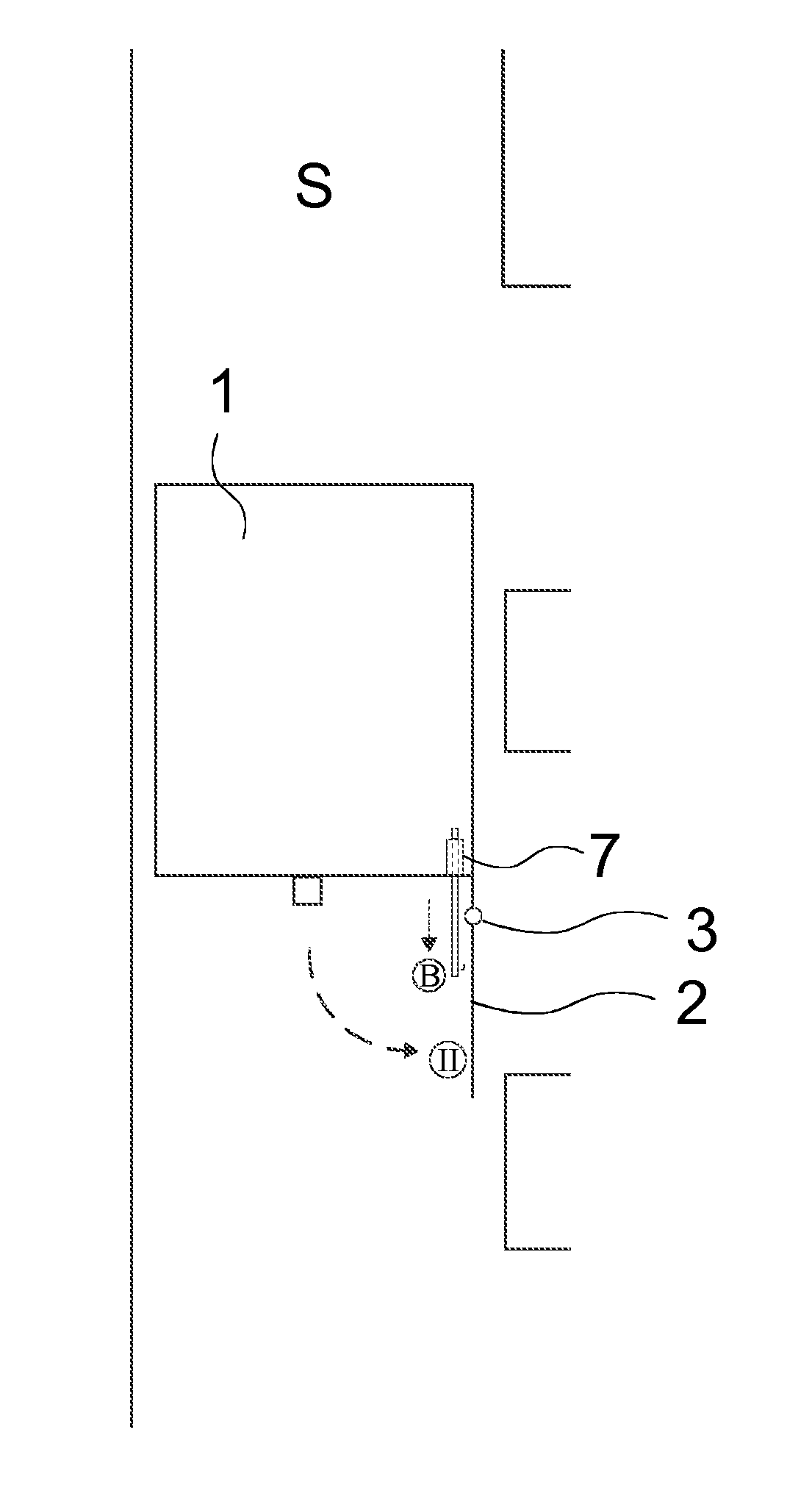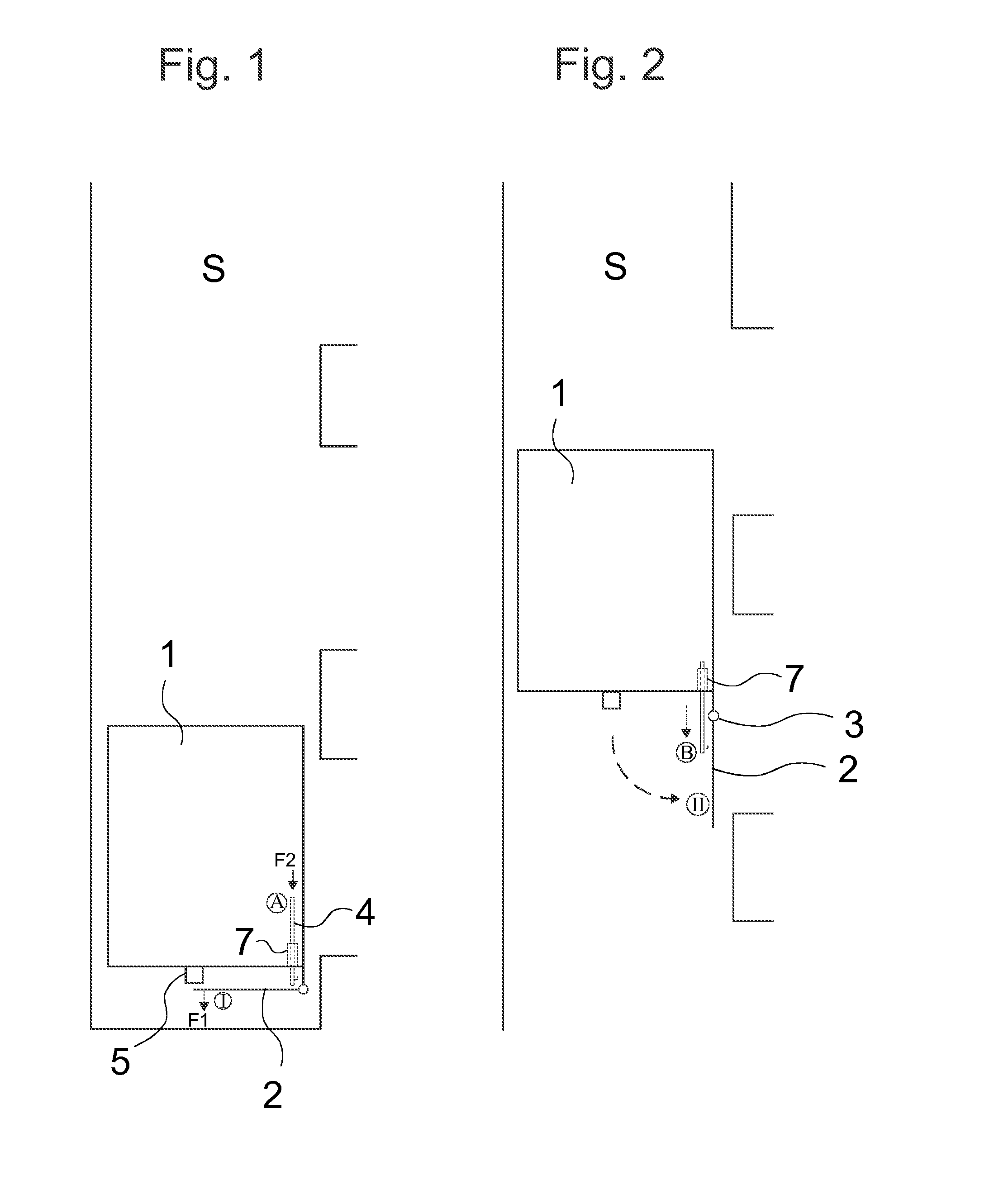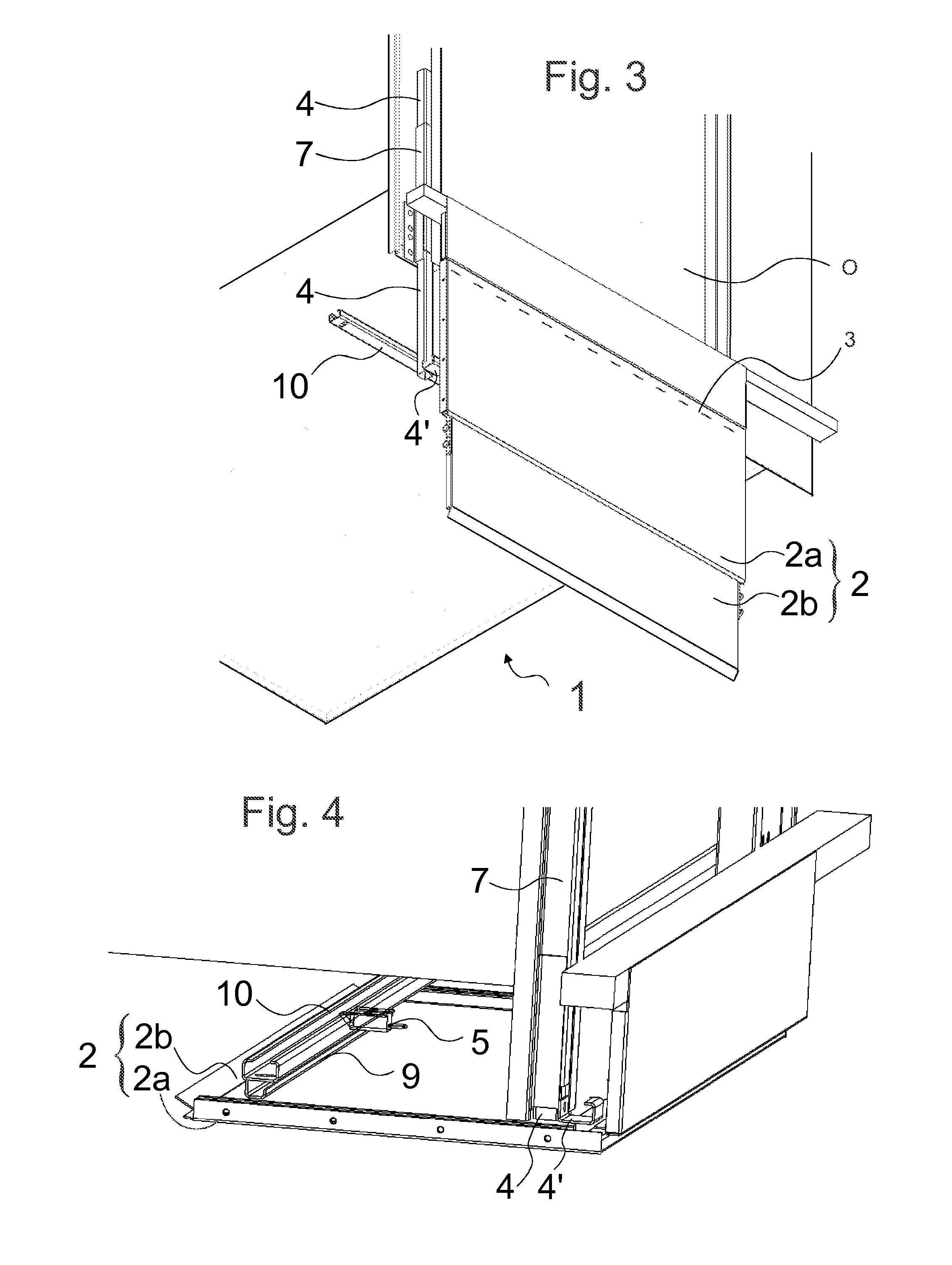Elevator
a technology of elevators and lifts, applied in the field of elevators, can solve the problems of dangerous situations, unplanned moving of elevators out of the operating position, and difficulty in preventing unplanned moving of elevators
- Summary
- Abstract
- Description
- Claims
- Application Information
AI Technical Summary
Benefits of technology
Problems solved by technology
Method used
Image
Examples
Embodiment Construction
[0032]FIG. 1 presents an elevator according to the invention, which comprises an elevator car 1 configured to move in an elevator hoistway S, and floor landings, and a protective arrangement, which protective arrangement comprises a protective wall 2 connected to the bottom part of the elevator car 1. The protective wall 2, as presented in the figure, is in the retracted position I taking up little vertical space below the elevator car 1. In this way the elevator car 1 could be driven very close to the base of the pit of the elevator hoistway S. FIG. 1 presents the elevator car in a situation according to normal drive, wherein the elevator car 1 has stopped at the point of the (bottommost) floor landing, in which case the sill of the door aperture of the elevator car 1 is level with the sill of the floor landing. Since the elevator car 1 is in normal drive, there is no access from the floor landing to below the elevator car 1, and the protective wall does not need to be in the opera...
PUM
 Login to View More
Login to View More Abstract
Description
Claims
Application Information
 Login to View More
Login to View More - R&D
- Intellectual Property
- Life Sciences
- Materials
- Tech Scout
- Unparalleled Data Quality
- Higher Quality Content
- 60% Fewer Hallucinations
Browse by: Latest US Patents, China's latest patents, Technical Efficacy Thesaurus, Application Domain, Technology Topic, Popular Technical Reports.
© 2025 PatSnap. All rights reserved.Legal|Privacy policy|Modern Slavery Act Transparency Statement|Sitemap|About US| Contact US: help@patsnap.com



